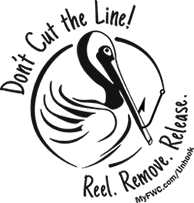FSA Partnership Meetings:
February 15: Collier County Partnership, 1-4pm, Rookery Bay Environmental Learning Center, RSVP to adinuovo@audubon.org
February 22: Panhandle Working Group, Bay County Public Library, RSVP to Ashley.Warren@myfwc.com
March 1: Suncoast Partnership, 1-3pm, Eckerd College, RSVP to forysea@eckerd.edu
March 6: Southeast FL Partnership, 10am, Manatee Lagoon, RSVP to Natasha.Warraich@myfwc.com
Save the Date
March 7: FSD Webinar for new surveyors, 1-2pm. Learn the basics of the Breeding Bird Protocol and how to enter surveys in the database.
March 8: FSD Webinar for returning surveyors, 1-2pm. This refresher includes 2018 updates to the database and protocol review.
March 9: FSD Webinar for rooftop monitors, 1-2pm. Learn the basics of monitoring seabirds and shorebirds on rooftops.
Events:
February 2-8: Florida Winter Shorebird Survey
February 3: Children's Shorebird Nesting Program
February 9-11: Birds of a Feather Fest
February 16-19: Great Backyard Bird Count
February 17: Birds of the Beach
February 17: Orlando Wetlands Festival
2018 is the 10th anniversary of the Florida Winter Shorebird Survey (a.k.a. The First Friday in February Survey)! We are enthused to again invite you to participate in the mid-winter survey that serves as a statewide snapshot of shorebirds and seabirds across the state.
The primary objective of the Winter Shorebird Survey is to better understand the winter distribution of shorebirds and seabirds in Florida. This annual survey will allow us to recognize long-term trends or changes in winter population sizes and distribution. It will also help us identify key wintering sites- information that is much needed to guide future conservation efforts, particularly for our state or federally listed focal species.
If you plan to participate in this year’s survey please review the 2018 Protocol, review the list of routes and sign up for an existing route or add a new route on the Route Survey List. After the survey is complete, please submit your data by March 1st into the Google Form. If you have questions about a route or the survey, please contact the Regional Coordinator in the protocol.
For the 2018 survey we made some changes intended to make it easier to sign up, survey, and submit data. Some of the highlighted changes are:
- Survey dates, February 2nd – 8th;
- You can now sign up for or add a survey route without contacting a coordinator;
- There is now an option to survey only focal species;
- Black Skimmers were added to the focal species list;
- GPS locations for flocks >50 non-focal species are now optional, rather than required.
We look forward to participating alongside you in this fun winter survey. Thank you for contributing your vital data. Please contact your coordinator if you have questions.
Happy Counting!
 American Oystercatcher: Entangled, Released, and the Background Story
by Ezra Thompson
Often flying under the radar, banded American oystercatchers may not always be detected. Until one recent incident when Lance Davis reported an oystercatcher flying into his line while fishing along the Gulf shore on a windy day. Knowing what to do, he carefully untangled the bird from the line, and noticed that there was a coded red band on its leg with the number “Y16”. Taking a quick photo before releasing the state-threatened American oystercatcher, Davis later reported the time, date, and location along with the code to the American Oystercatcher Working Group and the info was forwarded to state researchers familiar with the individual.
State-threatened American oystercatchers that are individually banded help researchers monitor yearly nesting success of an individual in addition to fledgling and adult survival and larger population dynamics. This individual oystercatcher was identified as Red (Y16), which hatched on a small oyster bar on the bayside of St. George Island. This bird was banded on June 29th, 2017 as a pre-fledgling along with its sibling, Red (Y17), with help from Apalachicola National Estuarine Research Reserve staff, Audubon Florida/FPS staff and local volunteers. After fledging, both siblings were observed foraging with their parents along the gulf shore of St. George Island in Franklin County, FL.
Where will Red (Y16) be seen next? American oystercatchers do not breed until at least 3 years of age, and along with many shorebirds, are long-lived and will have difficult lives ahead filled with adventures and successes and failures!
Please remember to discard fishing line appropriately in a monofilament recycling receptacle at boat launch or fishing pier. Pick up and throw away suspected entanglement hazards such as string, woven materials and objects that can be mistaken as food. To help the currently threatened American oystercatchers thrive in Florida, please stay the recommended 300 feet away from posted islands with nesting oystercatchers March through August.
To learn how to successfully rescue a hooked bird, visit Don't Cut the Line!
|
 |
It’s that time of year again! The 2018 breeding season is just around the corner and the FSD will re-open in March. Our team has put together a series of webinars tailored for monitors with all levels of experience.
March 7: FSD Webinar for new surveyors, 1-2pm. Learn the basics of the Breeding Bird Protocol and how to enter surveys in the database.
March 8: FSD Webinar for returning surveyors, 1-2pm. This refresher includes 2018 updates to the database and protocol review.
March 9: FSD Webinar for rooftop monitors, 1-2pm. Learn the basics of monitoring seabirds and shorebirds on rooftops.
Details and instructions will be emailed to registered participants prior to the webinars.
|